You know it:
The World’s best soccer players are raking in the dough!
And you probably have wondered…
“How will I ever get there… How can I get better at soccer and live the dream?”
No, it surely isn’t easy to become one of the best.
If you follow the right soccer drills and exercises and practice hard every day, though, you’ll no doubt get closer to fulfilling your goal of improving your soccer skills.
If commit to it and be patient maybe someday… (who knows?) you might even achieve fame and wealth!
This is where I come in to help you out!
There are countless ways to practice and fine tune your skills but what you’re about to find in this post is a broken-down and easy-to-follow training program on how to get better at soccer fast.
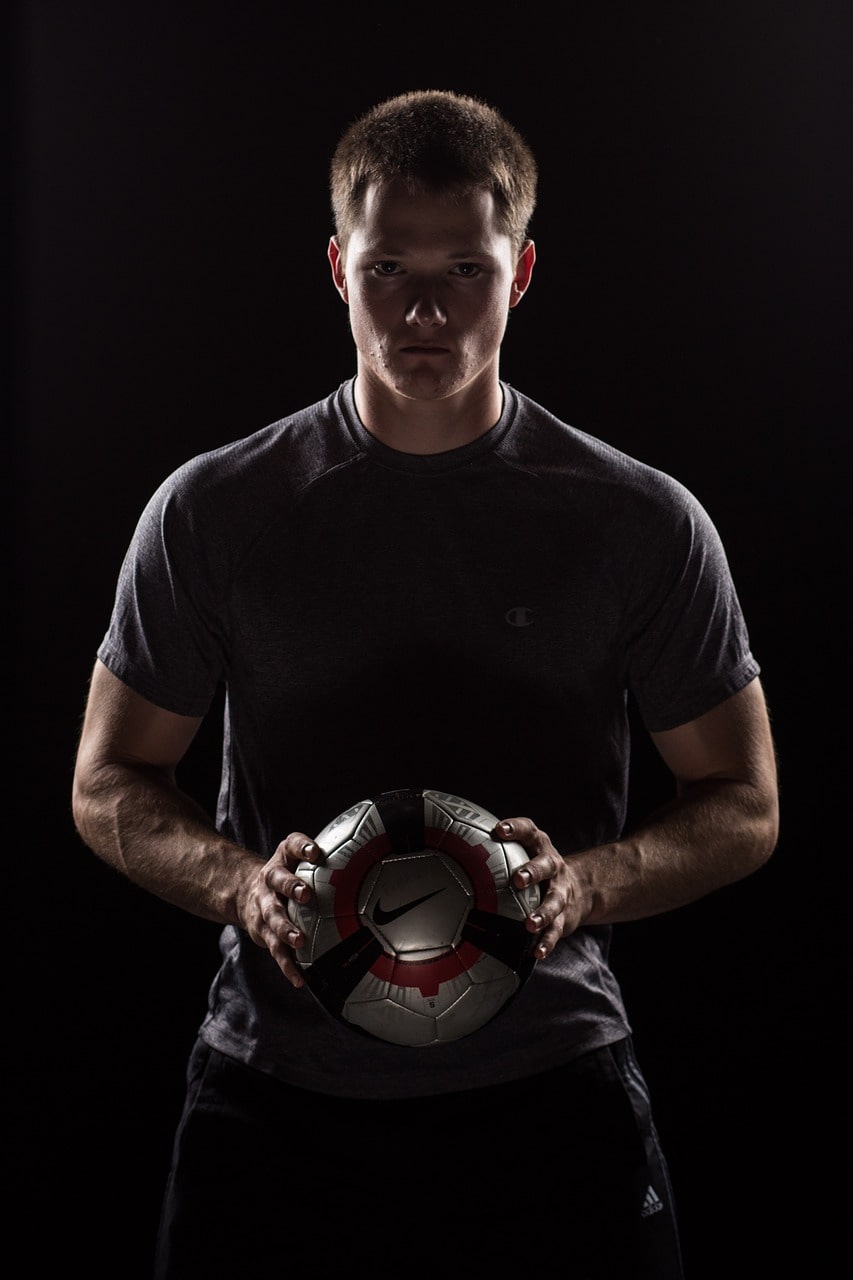
I’ll be teaching you some expert lessons on how to improve the most important areas of your game: reception, touch & control; defending; awareness; dribbling; passing and finishing.
You’ll find the answer to your “how can I get better at soccer” question through my insightful knowledge, actionable tips and helpful drills in each of the already mentioned areas to help you kick-start your soccer career.
All right…
Let’s kick-off already!
Improving Your Reception, Touch & Control
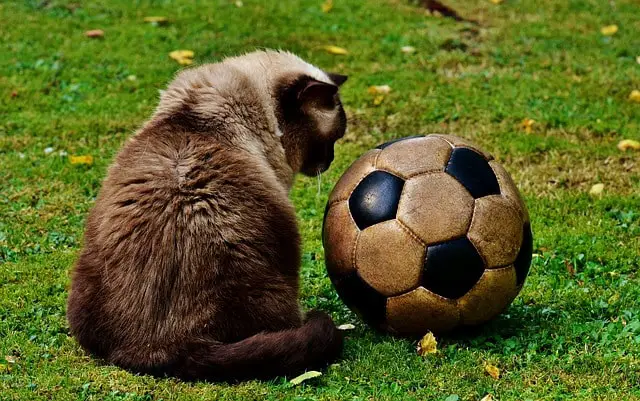
Figuring out how to improve your reception, touch and control soccer skills is one of most important — if not even crucial — factors to becoming a better footballer.
One of the very first ways you can begin working on your reception, touch, control and technique is through juggling a soccer ball.
We’ve explained how to get better at soccer juggling in a previous article but let me just emphasize that juggling is the easiest and most convenient way for anyone to start improving their basic technical abilities.
Arguably one of the most important skills you need to perfect is the first touch or reception. It’s where everything begins.
A good ball reception can earn you an extra second or two of time on the ball without pressure.
It may not sound like a lot but — trust me — it makes all the difference when you’re out there on the playing ground where every little detail really matters.
When receiving the ball, bend your knees and be prepared to move on the balls of your feet. A pass rarely comes straight to you so you need to be ready to move.
When that happens, you want your foot to move in the direction the ball is moving slightly before making contact.
This will cushion the ball and provide a softer touch.
Drill 1: Reception and Control
For this first drill, all you need is a wall and a ball.
Start with soft passes along the ground (for now) by kicking the ball against the wall and trying to control it in several different ways.
Some of the most common ones are with the inside of the foot, sole of the foot or the outside of the foot.
Keep kicking the ball against the wall again and again and controlling it with just a single touch.
Try the different ways while repeating this exercise.
Don’t forget: keep your passes along the ground in this first drill.
TIP: A good way to make sure you are controlling the ball well enough and keeping it close to your foot is either by drawing a circle or making a circle around you out of string.
Make the circle about 9 feet (2.75 meters) in diameter, stay in the middle and continue the drill. Try to keep your touches within the circle and try to only take one touch before kicking it against the wall again.
A variation of this drill is kicking the ball at different heights (or at different speeds) against the wall so that the pass comes back to you in the air (or more unpredictably).
This will make it a lot more difficult and you’ll need to use other parts of your body (thighs or chest) to control the football.
The same approach to touch / reception applies to both feet and any part of the body you use.
Drill 2: Oriented Reception
This second drill is a combination of the first drill and first tip.
It’s very similar but, instead of controlling the football inside a circle, you’ll have to control it and your touch should take you into a circle.
Here’s how to get this working:
Make four 15 feet (4.5 meters) circles all around you. Kick the ball against a wall and then try to take your first touch so that you land into the intended circle.
This is what I like to call “oriented reception”.
It refers to you moving your foot already toward the direction you want to go with the soccer ball.
It’s a great technique to quickly move away from a defender as you’ll have the element of surprise by being able to choose what direction to take your touch to before even making contact with the ball.
Once again, use different parts of your foot and try cushioning the touch so that it takes you into whatever circle you are aiming at.
You can also take it to the next level by juggling up against a wall.
Get fairly close to a wall, throw the ball against it and then control it into your hands or onto the ground.
When you feel comfortable with that, you can kick it out of your hands and repeat the same process. Eventually you will be able to keep kicking the ball against the wall without needing to stop it with your hands.
Drill 3: “Killing” the Flying Ball
This is definitely the most fun drill. (My players just love it!)
Simply kick or throw the ball high into the air and try to control it when it comes down. It can be pretty difficult for beginners and should only be attempted when you feel comfortable with the first drill.
The idea behind this kind of touch is the same as that of your own pass against a wall.
When receiving the flying ball, move your foot in the direction which the ball is coming from just slightly before making contact and bring your foot down slowly.
This gentle movement will dampen the speed and energy of the ball and sort of “kill” it on your foot thus providing a much softer touch.
It might help to think of your foot as a “spoon” that cushions the football dropping from the sky.
Practice with different parts of the body and feet; trying to use the laces is also a good exercise.
If you feel you’re very advanced, take it up a notch by employing the circle trick for this drill too. Just bear in mind that your throws or kicks will need to be very accurate this time.
Training Your Awareness
Albeit being one the most difficult skills to develop, awareness is simultaneously one of most important abilities for a player to learn.
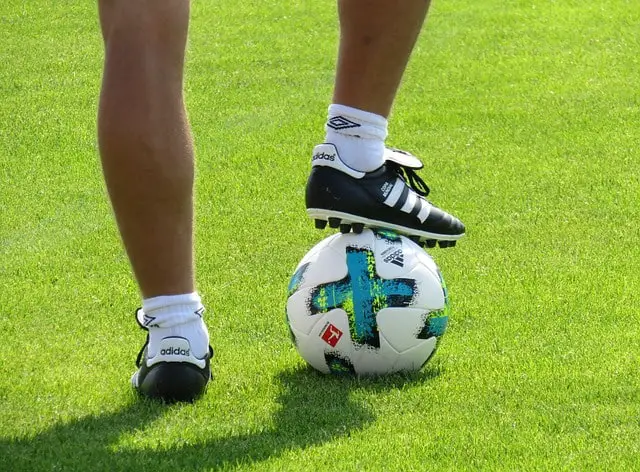
Awareness is all about perceiving your location on the pitch and where you can find free space, where the two goals are and who is around you (be them your opponents or teammates).
To help you train your awareness and overall perception, we’ll simply add a few new elements to the aforementioned drills. (Feel free to add these elements to any drill as you see fit.)
You’ll need a few cones and another person for these training methods.
Drill 4: Cone Spot
Have your friend or teammate with a stack of different colored cones behind you while you’re doing any of the other exercises we discussed earlier.
Before receiving the ball, you must quickly glance over each shoulder and shout out the colors of the two cones your friend has placed on the ground near you.
Doing this repeatedly will develop your habits of understanding where you are and what and who is around you.
Drill 5: Shoulder Touch
A variation to the previous drill is to have your teammate behind you and moving either to your right or left shoulders before you receive the ball.
You’ll need to look over each of your shoulders and touch the opposite shoulder to where your teammate is standing closer to.
It’s fundamental to repeat these two exercises so many times that during any practice drill or game you’ll begin looking over your shoulders and being more aware of your surroundings.
Developing Your Defending Skills
In my opinion, tackling and defending are the most difficult skills to learn, master and also to be taught.
It’s something that you cannot practice by yourself; you’ll need at least one friend or teammate to help you out.
To get yourself in a defensive approach, you’ll need to bend your knees, bring your whole body a little closer to the ground and diagonally in relation to the soccer ball.
Two important lessons we teach our footballers about defending are:
- Using how you position yourself in front of your opponent to direct them where you want them to go (usually to the sides of the field) in order to push them away from the front of the goal.
- Being perceptive and understanding which of your opponent’s foot is their weakest so you can stop them from cutting onto their stronger foot by blocking off that side with your body.
Drill 6: Defensive Approach
Have a teammate run toward you and then change direction diagonally.
Adjust your position and keep leading them in that direction (thus blocking their intended running path). Remember your defensive approach and keep a couple yards (meters) of distance.
You’ll also want to push your opponent further away from your goal and that’s exactly what we are simulating here.
The more central (in relation to your goal) your opponent is, the more dangerous he / she will become as he / she will be faced with more options.
I always try to teach my players to force their opponents to the sides of the field.
Maintaining a certain distance is also crucial. You don’t want to lunge in and sell yourself. A good opponent will use your momentum against you and dribble past you.
Patience is key and keeping a couple yards (meters) of distance away is good so you can stay with your player.
TIP: In the coaching world, there’s something we know as “baiting”. It’s a helpful little trick to use while defending.
Pretend to step closer to the opposing attacker so that you tempt them into making a move. This can often lead to poor and rushed decisions making your defending job easier.
When an opponent has his / her back to you, it’s important to stay at arm’s length.
A player is less threatening facing against the goal.
Trying to keep them that way is a good plan. Once again, be patient and do not rush in.
Stay on your toes and be prepared to follow them as they can turn in either direction unexpectedly.
Drill 7: One vs One Defending
In this next drill we’ll simulate a One vs One defending situation.
With a few cones to outline it, make a 10 x 10 yards (meters) box.
Use two pairs of cones as the goals at each end of the box.
Your opponent’s mission is to try and score a goal, but in order to do so he / she will need to go past you.
As you might expect, your job is to prevent that from happening.
Recall the steps to get yourself in a defensive approach:
- Position your body so you can block him / her from going where he / she intends to go through and push him / her to the sides of the box.
- Keep a couple of yards (meters) of distance.
- Stay on your toes and be prepared to follow him / her wherever he / she heads to.
- Be patient and do not rush in.
- Try the “baiting” trick to see if you can steal the soccer ball from him / her.
- If you can get the football off of them, try and score a goal yourself.
The first player to score five goals wins this “One vs One Defending” drill.
Getting Better at Dribbling
Learning how to get better at dribbling is probably one of the toughest steps in your path to becoming a better soccer player.
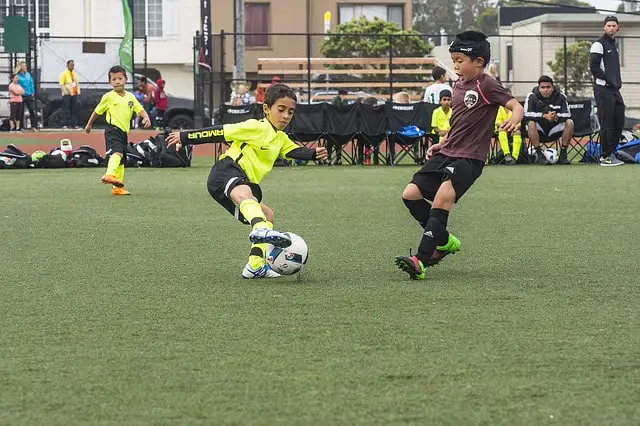
Nonetheless, there are two major ways you can follow to practice it. Those two ways come from how I see and divide the difficult art of dribbling: technical and speed dribbling.
Technical dribbling is waving in and out of obstacles (like cones or opponents) while keeping the ball very close to you.
Speed dribbling is sprinting with the ball without losing control of it.
Drill 8: Technical Dribbling
Technical dribbling can be practiced by setting up cones in any sort of formation; the most common being a straight line.
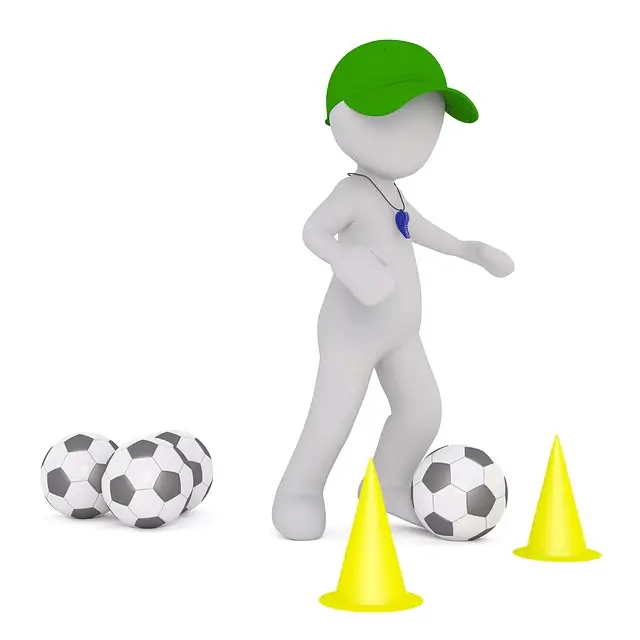
Slalom through them while maintaining the ball close to your foot.
About the cones: They can be either tall or flat, whatever you have available and like better. I personally prefer the tall ones because they prevent the ball from simply rolling over them
Use both feet and different dribbling variations.
Some practicable slalom techniques are by using the:
- Outside of the right foot, sole of the foot to stop.
- Outside of the left foot, sole of the foot to stop.
- Outside of the right foot, inside of the right foot.
- Outside of the left foot, inside of the left foot.
- Step on the ball with the left foot, roll through with the left foot; stop with the sole of the right foot and roll through with the right foot.
TIP: A useful trick would be to buy a ball with a string that can be tied around your leg. This way whenever the string gets tight and pulls your leg, you’ll know it was a bad touch.
Practice keeping the ball close and always having the string a little loose. To make it really harder, just speed up; keep pushing yourself until it is too much.
Drill 9: Speed Dribbling
Speed dribbling is very simple to train.
It’s the most match-applicable type of dribbling.
Sprint as fast as you can in a straight line or with minor direction changes.
For this drill, set up cones in a square of about 30 x 30 feet (roughly 9 x 9 meters) with each corner having a different colored cone.
Have a teammate or friend yell out a color. Sprint to that cone and stop as quickly as possible. Then run to the next one. Do 6 sets of 4 sprints.
In this case, it isn’t as crucial to keep the ball very close to you as in the previous drill, but it’s important to time the dribble so that you and the ball can get to the yelled-out colored cone at the same time and are able to stop.
The best way to practice this is to try and keep the football as close as possible without losing speed.
Speed is key, but keeping the soccer ball close is how you know you are getting better.
Sharpening Your Passing & Finishing Skills
Passing and finishing have everything to do with technique and accuracy.
There are a ton of different kicking techniques and that is why that finding yours is so important.
It’s also a good idea to have a wide array of kicking styles to better face and adapt to any in-game situation.
Try passing and shooting with the inside and outside of the foot, your laces and the classic toe poke.
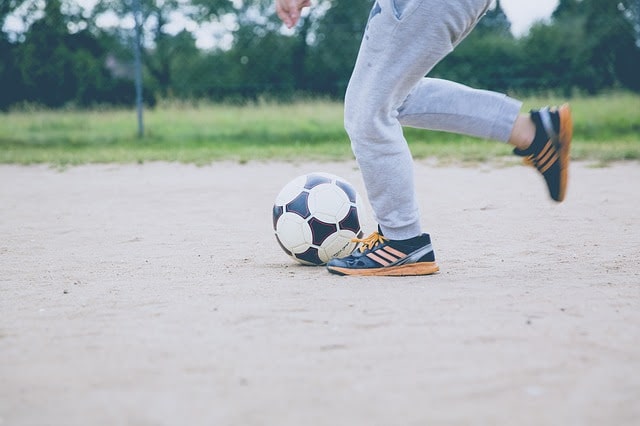
For passing, the inside of the foot is probably the easiest and most common. For shooting, it’s the laces.
Nevertheless, each player has its own technique and style and it’s up to you to see what works and what doesn’t.
Revisit our reception, touch and control drills above so you can also hone in on your passing ability.
The standard procedure for passing is to slightly bend your knees while gently leaning over the soccer ball and keeping your foot and shin in a firm “L” shape.
Then, by twisting your hips to the side make contact with the spherical object (i.e., ball) with the inside of your foot and follow through with the momentum of your body.
After mastering your passing technique, it’s time to focus on accuracy.
There are a couple of drills that can help you with this while also training other areas of your game.
Drill 10: Passing
Place pairs of cones at set distances; they’ll function as goals.
Beforehand, decide on which set of cones (goal) you’ll be aiming at.
Kick the football against a wall, take a glance at your goal, control the ball and then try and pass it through the cones.
Continue aiming at the closest pair of cones and then aim at another pair farther away (or, if you have just a pair of them, move the cones back).
Remember to take quick glances at the goals even though you might know where they are.
It should become second nature to you and a habit you cannot stop repeating.
Use both feet and experiment different types of passes.
Doing the entire sequence faster and faster helps practicing your accuracy.
Here’s a pretty good and quick video that shows you how to pass a soccer ball:
TIP: With some duct tape or a carpenter pencil draw a few straight lines or circles on a wall and use them as indicators to where you should be aiming at. This way the ball will always come back to you and it’s easier to repeat the process.
It’s helpful, as well, to have a friend yell out what target or goal you need to aim at in order to prevent you from pre-planning too much. In real matches, everything happens lightning fast so making sure your training drills are as game-like as possible will allow you to be better prepared.
Shooting is practiced similarly to how you train passing.
The difference is that you have a goal to aim at.
I often tell my players that shooting is simply passing into a goal and that’s how you should it see too.
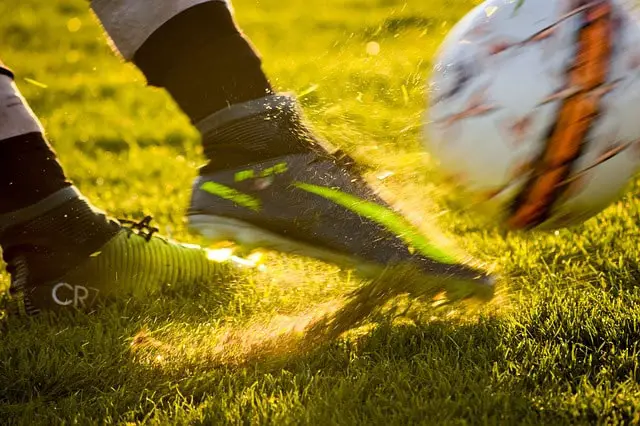
Nevertheless, shooting does require more power and precision as you’ll always have someone trying to block the ball from getting to where you intend it to go.
You must also be firmer in your contact with the “sphere”, especially if you’re using the inside of your foot.
Reminder:
It’s important to find the kicking technique you are most comfortable with.
Practicing up against a wall is how I did it as a child.
I became particularly good with the outside of my foot and the laces. It felt natural to me and very useful in games.
Drill 11: Shooting
This is the most basic drill but you can add a number of variations to it.
Use any obstacle that you have at your disposal (like those mini goals) to cover up the middle of a goal. Its corners should be the only parts left opened and unblocked.
Grab a bag of balls and start on the penalty spot.
Kick each of the balls into the corners of the goal until you feel it’s becoming easier and easier.
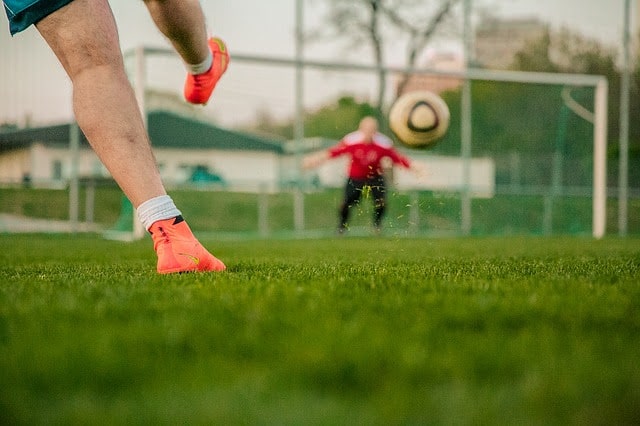
Now move to one of the edges (and / or corners) of the box and then to the opposite edge (and / or corner) and keep shooting.
When it becomes fairly easy to kick a ball that is not moving, poke the ball in front of you and try shooting it when it’s still moving.
Next, try kicking the football against a wall or wooden board and when it bounces back to you, control it first and then shoot it.
The different variations of this drill can perfectly be combined with the awareness exercises I mentioned earlier and they will also improve your touch.
The next progressive step is to kick the ball against a wall and instantly shooting without controlling it.
This move is a lot more challenging and should only be attempted when you are perfectly comfortable with kicking a ball that isn’t stopped or is slightly moving.
The final progression is kicking at high speed.
This is the most game-like and most challenging exercise.
Start 10 yards (roughly 9 meters) away from the edge of the box, dribble at high speed (use cones to mimic obstacles or opponents) and shoot.
Keep your eyes on the ball and your body over the ball.
Leaning back will easily make the ball go over the goal.
To master this move you will have to practice it a lot.
Conclusion
Is that “how can I get better at soccer” thought still nagging in the back of your mind? Hopefully not!
The intent of my How to Get Better at Soccer Fast training program here was to give you the right mindset, knowledge and tools to help you learn how to get better at soccer.
Practicing is the most important factor but you need to do it right.
(Regardless of how much you put into it, it’ll be useless to keep training stuff that won’t do you much use in a soccer match.)
There are a number of areas which need to be repeatedly and consistently trained to force you to develop and improve your soccer skills and make you become a better soccer player.
Start by practicing all of them individually and, when you fell ready, try combining many of these drills here with each other to set your training up a notch or two.
Keep challenging yourself by taking on harder and more difficult exercises and drills as you progress.
Be patient. It won’t happen overnight.
Even the pros keep doing this kind of exercises and drills every day in their careers.
Push your own limits and challenge your teammates. A little friendly competition among friends is a fun and positive way to take you up to the next level.

